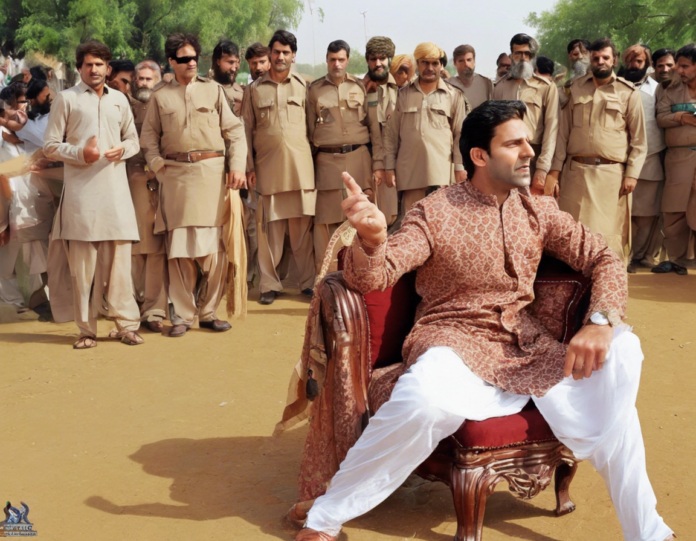In the realm of spirituality and faith, the divine encounters experienced by individuals hold profound significance. These encounters often serve as transformative moments that shape one’s beliefs, values, and understanding of the universe. Among the various forms of divine beings, “Man Sherawali,” or the divine feminine energy, is revered as a powerful and compassionate force in Hindu mythology and spiritual practice.
Understanding Man Sherawali:
Man Sherawali is a manifestation of the divine feminine energy, symbolizing strength, protection, and guidance. The term “Sherawali” denotes a lioness, highlighting courage, ferocity, and maternal instincts. Devotees of Man Sherawali believe in her ability to vanquish evil forces and protect her followers from harm.
Significance of Man Sherawali’s Presence:
The presence of Man Sherawali is often associated with moments of crisis, challenges, or the need for divine intervention. Devotees seek her blessings for protection, courage, and wisdom in navigating life’s obstacles. Through prayers, rituals, and devotion, individuals establish a deep connection with Man Sherawali, seeking her grace and guidance.
Divine Intervention and Miracles:
Many devotees share stories of miraculous experiences and divine interventions attributed to Man Sherawali. These encounters range from healing from illnesses and protection from danger to fulfillment of desires and overcoming adversity. The belief in Man Sherawali’s benevolence and power transcends generations, with devotees passing down stories of her miracles through oral tradition and sacred texts.
Rituals and Devotional Practices:
Devotees of Man Sherawali engage in various rituals and devotional practices to honor and connect with her divine presence. Navratri, a nine-night festival dedicated to the worship of the divine feminine, holds special significance for followers of Man Sherawali. During Navratri, devotees observe fasting, conduct pujas (ritual ceremonies), and sing devotional songs in praise of Man Sherawali.
Symbols and Iconography:
Man Sherawali is often depicted carrying weapons such as a trishula (trident) and khadga (sword), symbolizing her power to protect and destroy evil forces. She is adorned with red clothing and floral garlands, signifying auspiciousness and vitality. The lion is her sacred vehicle, representing bravery and strength.
Mantras and Chants:
Reciting mantras and chants dedicated to Man Sherawali is a common practice among her devotees. The “Man Sherawali: Tera Sher A Gaya” mantra is a powerful invocation that praises her divine attributes and seeks her blessings for protection, courage, and prosperity. Chanting this mantra with sincerity and devotion is believed to invoke Man Sherawali’s presence and grace.
Stories and Legends:
Ancient mythological texts and oral traditions abound with stories and legends of Man Sherawali’s divine manifestations and miraculous deeds. From vanquishing demons to protecting devotees during times of peril, these narratives illustrate her role as a benevolent and fierce guardian of righteousness and dharma.
Seeking Man Sherawali’s Blessings:
For devotees seeking Man Sherawali’s blessings, cultivating a deep sense of devotion, humility, and faith is essential. By establishing a personal connection through prayer, meditation, and acts of kindness, individuals can invite Man Sherawali’s grace into their lives and experience her divine presence in profound ways.
FAQs:
-
Who is Man Sherawali?
Man Sherawali is a manifestation of the divine feminine energy in Hindu mythology, symbolizing strength, protection, and guidance. -
What is the significance of the term “Sherawali”?
The term “Sherawali” denotes a lioness, symbolizing courage, ferocity, and maternal instincts. -
How can devotees connect with Man Sherawali?
Devotees can connect with Man Sherawali through prayers, rituals, chanting mantras, and observing festivals like Navratri. -
What are some common symbols associated with Man Sherawali?
Symbols associated with Man Sherawali include the trishula (trident), khadga (sword), red clothing, floral garlands, and the lion. -
What is the significance of Navratri in the worship of Man Sherawali?
Navratri is a nine-night festival dedicated to the worship of the divine feminine, including Man Sherawali, through fasting, pujas, and devotional activities. -
Can chanting mantras dedicated to Man Sherawali invoke her blessings?
Yes, chanting mantras dedicated to Man Sherawali, such as “Man Sherawali: Tera Sher A Gaya,” is believed to invoke her divine presence and blessings. -
Are there any stories or legends associated with Man Sherawali’s divine manifestations?
Yes, ancient texts and oral traditions contain numerous stories and legends of Man Sherawali’s miraculous deeds and divine interventions. -
How does Man Sherawali protect her devotees?
Man Sherawali is believed to protect her devotees from harm, evil forces, and obstacles, offering them strength, courage, and guidance in challenging times. -
What is the significance of the lion as Man Sherawali’s sacred vehicle?
The lion symbolizes bravery and strength, reflecting Man Sherawali’s attributes as a fierce and protective guardian. -
How can individuals seek Man Sherawali’s blessings in their daily lives?
Individuals can seek Man Sherawali’s blessings by cultivating devotion, humility, and faith, and by embodying her qualities of protection, courage, and wisdom in their actions and thoughts.
In conclusion, the reverence and devotion towards Man Sherawali embody the timeless connection between humanity and the divine feminine energy. Through prayers, rituals, stories, and sacred practices, devotees continue to seek her blessings, guidance, and protection in their spiritual journey. May the presence of Man Sherawali inspire courage, faith, and transformation in those who seek her divine grace.

